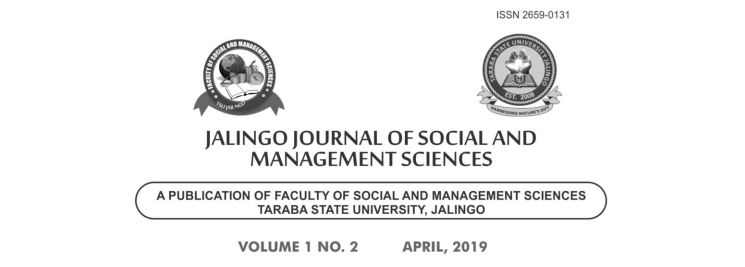The Influence of Drainage Basin Morphometry and Runoff Rate on Vulnerability to Gully Erosion in Wadata Catchment Area, Makurdi Local Government, Benue State
Keywords:
Basin morphometry, gully erosion, runoff rate, vulnerability, Wadata catchment areaAbstract
Gully erosion is one of the world’s biggest environmental problems which results in the destruction of buildings, roads, farmlands, human death among others. This paper, therefore, assesses the influence of Demekpe Drainage Basin morphometry and runoff rate on vulnerability to gully erosion in Wadata catchment area, Makurdi Local Government Area of Benue State, Nigeria with a view to aiding the design of soil erosion control structures. The square method was used to delineate topographic maps of the study area at intervals of 5cm for extraction of drainage basin parameters. Parameters measured include stream density, stream frequency, stream intensity, stream length, stream area, stream order, bifurcation ratio and length of over land flow. Also Erdas Imagine, ArcGIS, and Surfer 9.0 Softwares were used to generate a Digital Elevation Model of Wadata catchment area to depict spatial vulnerability to gully erosion and determine size of the catchment area for estimation of peak rate of runoff in the study area using the rational method. The Digital Elevation Model shows that Old Government Reservation Area and Benue Crescent Area in Makurdi have moderate drainage intensity (≥ 0.5) and are relatively more vulnerable to gully erosion as compared to other areas like New Garage Area and Wadata Area with lower drainage intensities of ≤ 0.2 and ≤ 0.3 respectively. The results also show that Demekpe Drainage Basin has moderate drainag density (0.78km -1 ), drainage intensity (0.63) and overland flow of (1.68km) with tendency of influencing the extent to which the earth surface is being lowered by agents of denudation in the area, predicting the likelihood of gully incision by runoff. Wadata catchment area has a high peak rate of runoff (83.05 m 3 /sec), which is capable of influencing gully development in the area. The paper, therefore, recommends that a storm drain with size of 60m embankment and reservoir capacity of 4,000 m 3 should be designed and constructed to help contain excess runoff in Wadata catchment area for atleast ten years; and contour trenches can also be dug and rubble used to reduce channelised flow and sediment entrainment along slopes for controlled gully development in the area.

Downloads
Published
Issue
Section
License
Copyright (c) 2023 JALINGO JOURNAL OF SOCIAL AND MANAGEMENT SCIENCES

This work is licensed under a Creative Commons Attribution-NonCommercial 4.0 International License.
